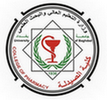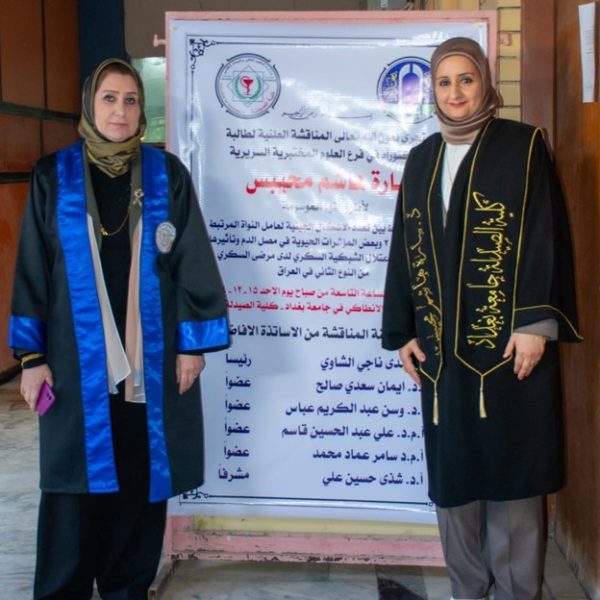The College of Pharmacy discussed the PhD dissertation entitled “Study the Association of Genetic Polymorphisms of Nuclear Factor Erythroid-2 Related Factor 2 and Some Serum Biomarkers in Relation to Pathogenesis of Diabetic Retinopathy in Iraqi Type 2 Diabetic Patients” by the student Sarah Hashim Mhaibes and her supervisor, Professor Dr. Shatha Hussein Ali, at the Clinical Laboratory Sciences Department. The study aimed to detect the presence of single nucleotide polymorphisms of the NFE2L2 promoter region (rs35652124) and their relation to the development of retinopathy in Iraqi type 2 diabetes mellitus patients and to find the possible association between the SNP of NFE2L2 (rs35652124) and some diabetic retinopathy-related serum biomarkers (methylglyoxal, pentosidine, carboxymethyl lysine, glyoxylase-1, superoxide dismutase, hemeoxygenase-1, vascular endothelial growth factor, and endocan). The patients who participated in this study were selected from those attending Ibn Al-Haitham Hospital of Ophthalmology and the Specialized Centre for Endocrinology and Diabetes in Baghdad. The recruitment started in February 2023 and ended in July 2023. The case-control study included 90 patients diagnosed with type 2 diabetes mellitus (48 females and 42 males), aged 40 to 65 years. The patients were divided into two groups as follows: Group A included 60 patients diagnosed with diabetic retinopathy (DR) [among them were 29 patients with non‑proliferative DR (NPDR) and 31 patients with proliferative DR (PDR)], and group B included 30 diabetic patients without any evidence of DR (DWR). The result illustrated that the TT and TC genotypes of the rs35652124 (T>C) SNP of the NFE2L2 gene were highly prevalent within the DR group. In contrast, the rs35652124 CC genotype had a lower incidence in the DR group than in the DWR group. However, the rs35652124 CC genotype had a significantly higher frequency in the DWR group than the DR group. The type 2 diabetic individuals with the (CC) mutant genotype of rs35652124 (T>C) might have a protective impact on DR. Additionally, a non-significant association between SNPs and the studied serum biomarkers among DR and DWR groups.The study recommended increasing the number of patients from multiple centers and determining the concentrations of the studied biomarkers in the vitreous fluid to evaluate their association with their serum levels.




